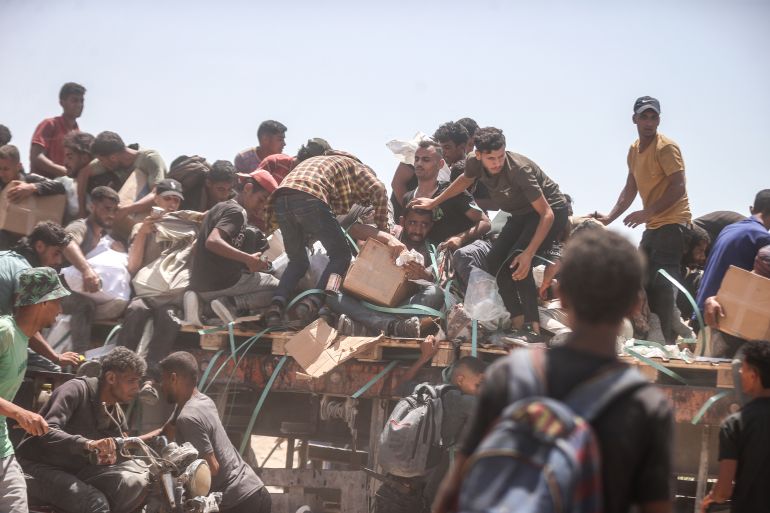The humanitarian catastrophe in Gaza continues to escalate, with recent reports confirming the tragic deaths of over 70 Palestinians actively seeking vital humanitarian aid. This devastating toll underscores the dire circumstances faced by a population teetering on the brink of widespread famine, as international bodies and health officials issue urgent warnings about an unprecedented surge in starvation cases across the besieged territory.
In harrowing incidents, at least 51 individuals were reportedly killed and hundreds wounded by Israeli forces while attempting to access aid trucks near the Zikim crossing point in northern Gaza. Concurrently, another 20 aid seekers met a similar fate near the Morag Corridor in southern Gaza, according to medical sources and local reports, painting a grim picture of the perilous struggle for survival amidst the ongoing conflict.
The severity of the crisis is further compounded by the reported involvement of the US and Israeli-backed GHF in aid distribution efforts, which have drawn significant criticism. More than 1,000 Palestinians seeking assistance at GHF-operated sites have allegedly been killed since late May, raising serious concerns from the UN and other humanitarian organizations regarding both the adequacy of aid provision and the critical security lapses at these crucial distribution points.
Aid agencies and health officials are increasingly vocal about the alarming rise in acute malnutrition and starvation, particularly affecting vulnerable populations such as children and the elderly. The sustained blockade and military operations have systematically dismantled essential infrastructure, leaving millions without reliable access to food, clean water, and medical supplies, creating conditions ripe for a public health disaster.
Despite the overwhelming and escalating humanitarian needs, the volume of aid entering Gaza remains drastically insufficient, falling far below the critical thresholds required to sustain the population. UNRWA, the principal UN agency for Palestinian refugees, has publicly stated that the limited aid trickle barely reaches a fraction of the population, highlighting the profound logistical and political obstacles impeding effective relief efforts.
The desperate reality on the ground is starkly illustrated by widespread reports of aid trucks being looted by starving crowds, a predictable and tragic consequence of prolonged deprivation. This desperation underscores the profound failure to meet basic human needs, as residents endure days without any food, reflecting a complete breakdown in the supply chain necessary for survival.
The conflict’s human cost extends beyond starvation, with reports confirming the tragic deaths of journalists and countless civilians. At least 178 journalists have been killed in Israel’s war on Gaza since October 7, further impeding the flow of independent information from the besieged strip. The cumulative toll reveals that Israeli attacks have resulted in over 60,000 Palestinian deaths and more than 146,000 injuries, according to Gaza’s Health Ministry.
Amidst this catastrophic humanitarian backdrop, political discussions continue to unfold with potentially far-reaching implications. Recent hints from an Israeli minister regarding the possible annexation of parts of Gaza raise significant international concern, suggesting a move that could permanently undermine prospects for a two-state solution and further entrench the occupation, in clear violation of established international law.






Leave a Reply